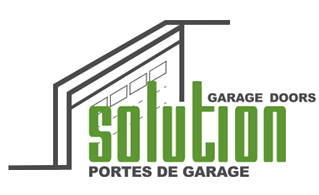Garage Door FAQs
Frequently Asked Questions
If your garage door and opener looks okay but it's still giving you problems, like making excessive noise, struggling to open or close all the way, or having trouble staying open when it's in the half way position, there are several things you can try, to fix the problem on your own.
Openers are similarly engineered, however some are quieter than others. If you have living quarters located near your garage, for example, you may want to purchase a quieter belt driven opener. If you need a dependable, long life opener for use with a heavy garage door, than a chain driven opener would be your best choice.
Retail stores provide "Do It Yourself" garage door openers that don't come with an 'at home' warranty. This can become a problem if both the hardware and the store didn't provide a repair or diagnostic warranty, necessitating the hiring of a professional. Openers that are sold by garage door companies also have a superior build. Unlike the opener models available at many retail and hardware stores, garage door company openers will come with a sturdier chain and rail, thus having better resistance against bending and buckling over time. Retail and hardware store openers can cost around $200 - $300 in addition to a $115 in installation charges. The typical expense for an opener and it's installation with a garage door company however is $350 - $450.
The most important reasons to purchase an insulated door are:
- Insulation improves a door's durability against denting making it a good, light weight substitute for tough, heavier weight, wooden doors.
- Energy efficiency is also an important consideration if there are living areas near or around the garage that require temperature regulation.
- Inspect the cables that connect the spring system to the brackets at the bottom of each side of your garage door. If these cables are worn, rusty or frayed they could break and cause possible injury. *Because of risk regarding high spring tension, cables should only be replaced by a professional garage technician.
- Inspect the springs by operating your door manually and checking your spring to see if it's handling the door's weight correctly. The average 10 year old should be lift the door without having any problems. If there is a problem don't attempt to fix it on your own by overloading turns on the spring further than it's capacity. Any adjustments or repairs should be done by a professional.
- A noisy door can be a sign of oncoming trouble so inspect the track and rollers first. Because the opener works by pushing the door downward rather than pulling it, if the tracks are warped or the bearings are worn they may cause your opener to rewind. Lubricating your rollers can help, if not however, they'll need to be replaced to prevent your opener from getting damaged.
- Lubricate by applying silicone with teflon (in the form of a lubricating spray) to the springs, rollers, drums, hinges, track, chain and belt once every 6 months. *Avoid using heavy grease as it hardens and collects dirt and grass making any issues with your garage door or opener worse. Also, be sure to remove any old grease before applying fresh lubricant.
Important note: door springs always need to be replaced as a set! While the purpose may not be so obvious to the novice, it does make sense. Once one spring is broken the other one is probably not far behind especially considering how springs weaken with continued use. Combining a new spring with an older one will likely cause an imbalance in your door's operation. If you own 2 separate garage doors and only one spring has broken, it's strongly recommended to replace the springs on each door if their springs are around the same age. Depending on your door's position, when a spring breaks it can cause serious injury as well as damage your opener.
- Be sure to remove anything that could be obstructing or catching the door's travel.
- See if your safety sensors are in proper working condition.
- Use manual operation to feel for any obstructions. Keep in mind that when the door is pulled in an upward or downward direction it can feel light, however because the opener pushes the door, you need to watch for excessive noise, weight or any imbalance in the garage door.
- Don't simply increase the opener's travel force as this will put more strain on the opener during operation which could cause your opener's gears or housing to become damaged.
These are common problems to keep people from having full access to their garage. Your garage can become like a bank vault in the event of a opener failure, power outage or if the remote has been accidentally left inside. Should this happen a garage door emergency release kit would easily solve the problem. If there isn't already and existing one, a hole can be drilled in your garage door to have the emergency release kit installed. Whenever the key is used, the lock's body can be pulled right through the hole, in turn disconnecting the release of your opener and allowing you to operate your door manually from the outside. If you don't have the emergency device installed we can drill the initial hole, "fish" for the opener release and later on install the emergency release kit.
First check for any shaking of the garage door during operation as any excessive vibration can cause the filament in your opener's bulb to prematurely expire.
- Dip switch programming: A remote will usually have a set of 1-10 switches that you can re-position. A duplicate set of switches can be found toward the back of your garage door opener, match the switch positions between the opener and the remote and the remote will be ready for use.
- Learn code programming: A learn code button on an opener will allow you to program your remote easily by pushing the opener's button once, then pushing the remote's button twice.
Releasing: Depending on your model's requirements you may have to pull the rob backwards or forwards in a downward direction to stay disengaged. To reattach, again, the technique depends on your particular model and brand of opener, you may either have to pull on your rob once, steer the pin at the end of the trolly to set it in position then let the opener run till it automatically engages or pull the leveler upward.
A garage door should be easy for a child of 10 years to lift without any trouble. If it isn't, you have worn out springs. This can damage your opener or even result in a spring breaking unexpectedly and causing a serious injury. Don't attempt any repairs or adjustments, this should be handled by professionals only.
A garage door should always operate smoothly and quietly regardless of it's age. Perform regular lubrication and inspection of the cables, rollers and tracks. If any component is in poor condition, it can and will damage your door and opener because each part of the door and it's opener are interdependent on each other and should never struggle during operation.
A garage door should always operate smoothly and quietly regardless of it's age. Perform regular lubrication and inspection of the cables, rollers and tracks. If any component is in poor condition, it can and will damage your door and opener because each part of the door and it's opener are interdependent on each other and should never struggle during operation.
Your garage door opener can only operate if it's safety sensor beam is in proper working order. If your sensors indicator light is off, one or more things could be responsible:
- Check for any obstructions in the path of the two sensors.
- Check for misalignment of the sensor, if it isn't aligned properly adjust the sensor eyes till they face each other perfectly.
- Inspect for any disconnection in the wires between the garage door opener and the sensor.
Torsion springs are under high tension and necessitate the use of special adjustment tool. Because of this high tension any component involved with the counterbalance system, including the torsion spring, must be handled by professional technicians only. Such components are, the cable, the spring, the cable drums, the corner brackets connected to the cables and the tension spring shaft's center bearing brackets.
- Measure the height and width of your door opening using feet and inches. This measurement will be the required door size.
- Check sideroom allowance: 3 - 3/4 needed on either side for installation of systems using vertical tracks, standard torsion spring, SystemT's EZ-Set Torsion Spring and for standard extension spring. And 5 - 1/2 sideroom allowance for EZ-Set's SystemT Extension Spring model.
- Measure the "headroom" distance, located between the uppermost part of the door's opening (called the 'jamb header') and ceiling (floor joist). About 10' is needed for the typical extension or EZ-Set extension spring model. Approximately 12' is needed for SystemT EZ-Set Torsion Spring and standard torsion spring model. If you have inadequate headroom, there is special hardware models available. Extra headroom is needed if an automatic garage door opener will be installed.
- Measure the "headroom" distance, located between the uppermost part of the door's opening (called the 'jamb header') and ceiling (floor joist). About 10' is needed for the typical extension or EZ-Set extension spring model. Approximately 12' is needed for SystemT EZ-Set Torsion Spring and standard torsion spring model. If you have inadequate headroom, there is special hardware models available. Extra headroom is needed if an automatic garage door opener will be installed.
Note: If the door's opening is shorter than the garage door height, a proportional adjustment needs to be made to the available headroom's measurement. - "Backroom" measurement is taken by measuring from the garage's back wall to the garage door's opening. Typically this should be about 18' plus the door's height. If the planned installation is for an automatic door opener more back room may be needed.
Call us today : 1-855-676-7837
We sell and repair ALL makes and models of Garage Doors Openers















